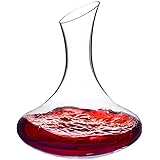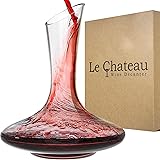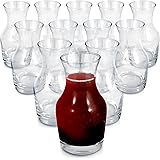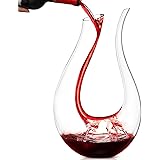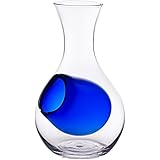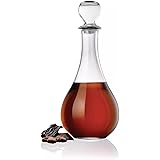Welcome to the captivating world of red wine! As highlighted in the insightful video above, navigating the diverse landscape of red wine grapes can feel like exploring a competitive field. Many grapes vie for the top spot. Yet, a few truly stand out. This red wine guide delves deeper into these iconic varietals. We will uncover their distinct characteristics, origins, and perfect pairings. You will gain a richer understanding of these beloved red wine grapes.
Our journey begins with three absolute legends. These are Pinot Noir, Merlot, and Cabernet Sauvignon. These grapes hail from the prestigious Burgundy and Bordeaux regions of France. They embody classic style and elegance. A modern contender also joins this league. Syrah, known as Shiraz in many parts of the world, has gained significant importance. Its popularity has surged in the last 10 to 20 years. Let’s explore each of these powerful red wine grapes in detail.
1. Pinot Noir: The Elusive Elegance of Light Red Wine
Pinot Noir holds a special place in red wine history. It has been cultivated in France’s Burgundy region since the 12th century. This long heritage speaks to its enduring appeal. It stands at the lighter end of the red wine spectrum. Its appearance in the glass is telling. You will notice a beautiful translucence. This is due to the grape’s naturally thin skins. These thin skins deliver less color and flavor intensity. Yet, the flavors it does impart are incredibly seductive. They are truly desirable. This makes Pinot Noir one of the most sought-after wines. It is highly coveted and supremely collectible.
Pinot Noir thrives in cool climates. These conditions allow its delicate characteristics to shine. Expect bright, vibrant red fruit aromatics. Think of fresh cranberries and juicy strawberries. These notes create a captivating bouquet. The wine often boasts a lighter body. It offers a graceful texture on the palate. Imagine a light-bodied red wine. It pairs beautifully with dishes typically reserved for whites. For example, it complements seafood wonderfully. It also enhances white meats, like roasted chicken or turkey. Its versatility is truly remarkable. Some of the most revered examples come from Burgundy’s Côte d’Or. Yet, new world regions like Oregon and Central Otago in New Zealand craft outstanding Pinot Noir as well. Their wines capture the grape’s signature vibrancy. Vintners in these regions meticulously manage their vineyards. This ensures the delicate grape expresses its full potential.
2. Bordeaux Behemoths: Merlot and Cabernet Sauvignon
Next, we encounter two “kissing cousins.” These are Merlot and Cabernet Sauvignon. Both originate from Bordeaux, France. They are distantly related. These two red wine grapes often grow in the same vineyards. They share a similar aromatic resemblance. This is especially true when grown in cooler climates like France and Italy. However, their profiles diverge. This happens when they are planted in sunnier, warmer regions. Consider places like Chile or California. Warmer temperatures allow their individual characteristics to fully express themselves. It becomes much easier to tell them apart.
2.1. Merlot: The Smooth Companion of Red Wine Blends
Merlot is often recognized for its approachable character. It provides a softer, plush texture. On the nose, Merlot frequently offers an herbal quality. This is distinct from Pinot Noir’s earthiness. Its fruit range tends to be darker. Notes of ripe blackberries and luscious plums come to mind. These replace the brighter strawberry and cranberry notes. When sourced from cooler regions, Merlot can display a woodsy character. This might evoke cedar or even roasted bell peppers. Its adaptability makes it very food-friendly. It pairs well with a variety of cuisines. Think of rich pasta dishes or roasted red meats. Merlot experienced a dip in popularity for a time. However, it has made a strong comeback. Winemakers now focus on crafting high-quality, expressive versions. It often plays a crucial role in Bordeaux blends. It softens the tannins of its more assertive cousin. This creates a beautifully balanced red wine.
2.2. Cabernet Sauvignon: The Robust Powerhouse of Red Wines
Cabernet Sauvignon is arguably the most famous grape worldwide. It enjoys immense recognition. It produces some of Bordeaux’s finest wines. This grape is legendary for its long-term aging potential. This capability stems from its unique structure. Cabernet Sauvignon berries are smaller. They have thicker skins compared to Merlot. During fermentation, these thicker skins deliver a double dose. They contribute intense color and flavor. This results in a robust, concentrated wine. Aromatically, Cabernet Sauvignon shares some dark fruit notes with Merlot. Blackberries and cherries are prominent. Yet, it adds another layer of complexity. Herbal notes are often present. Imagine flavors reminiscent of darker foods. Licorice, dark chocolate, and roasted coffee frequently appear. This is an intense, powerful wine. It delivers a big “oomph” of flavor. Its firm tannic structure allows it to evolve gracefully. It can age for decades. This makes it a favorite among collectors. Regions like Napa Valley, Coonawarra in Australia, and, of course, Bordeaux, produce world-class Cabernet Sauvignon. It is a cornerstone of many iconic red wine blends.
3. Syrah/Shiraz: The Spicy Trailblazer of Red Wines
If we add another grape to this major league, it must be Syrah. This grape also originates from France. It comes from the Rhône Valley. However, it is most often recognized by another name. In many parts of the world, it is called Shiraz. Shiraz is the identity given to the Syrah grape. This occurs when it is grown in the Southern Hemisphere. Think of places like Australia and South Africa. Despite the different names, it is genetically identical. The Syrah we find in California and France is the same grape. This naming convention simply reflects regional traditions.
Syrah shares characteristics with Cabernet Sauvignon. It boasts similar thick skins. It also delivers a dense color to the wine. Yet, its tannic structure is usually not quite as pronounced. This difference often leads to a specific style. Many Syrah/Shiraz wines are made for more immediate enjoyment. They emphasize forward fruit flavors. This is often described as a “drink me now” style. Aromatically, Syrah offers a distinctive profile. Expect rich blackberry pie notes. These are complemented by a captivating black pepper quality. This combination makes it very appealing. It is friendly and incredibly flavorful. Imagine this as a rich, savory sauce. It delivers a “heck of a lot of flavor per square inch.” Its rise in global prominence over the past two decades is remarkable. This makes it a crucial part of any red wine guide. Famous examples include the structured Syrahs of France’s Hermitage. We also see the bold, fruit-driven Shirazes from Australia’s Barossa Valley. Each offers a unique expression of this versatile grape.


